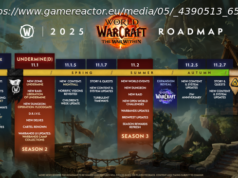In 2000, Republicans, Democrats and Independents were all within six percentage points of one another in terms of their trust in the media, ranging from 47..
Studies show that America’s trust in the media is at an all-time low, and has been trending lower for more than a decade. And though it’s been an ongoing topic and issue for several years, growing distrust in the media has accelerated so abruptly that the situation now borders on alarming. Not helping matters has been the dizzying pace of attacks by our new president, whose assault on the press has intensified to such a height that he recently even referred to the news media as the “ enemy of the American people.”
To quantify things, a September 2016 study released by Gallup showed that only 32 percent of Americans said they trusted the media. This was down from 40 percent a year earlier and 50 percent in 2005. In the late 1990s and early 2000s that figure generally hovered in the low-to-mid- 50s. But is it really all Americans that increasingly distrust the media? Well, not exactly. Gallup further broke the figures down by political party, revealing some telling results.
In 2000, Republicans, Democrats and Independents were all within six percentage points of one another in terms of their trust in the media, ranging from 47 percent to 53 percent. But since that time, figures for both Independents and Republicans have been declining, with Republicans generally declining at a sharper rate. And 2016 saw the steepest drop yet for Republicans, sinking all the way to 14 percent.
To understand how this might have happened, it’s helpful to look at the evolution of where Republicans have been consuming their news. Examining the initial declines in 2003-04, you see that those drops happen to coincide with two different, but significant and related events — the first being the attacks of September 11, 2001, and the second being the launch of several hyper-conservative long-form talk radio programs in a compressed period.
Prior to 9/11, Rush Limbaugh had ruled the national talk radio airwaves for a decade. But after Rush (and to some extent Dr. Laura Schlessinger), most of the other top performers were the likes of morning show personalities like Howard Stern and Don Imus.
But once the nation was attacked, American citizens found themselves immediately ravenous for any minute-by-minute nugget of news and information they could get their hands on. Any sliver of potential information or even just speculation was welcome, particularly by those listeners who spent long periods of time commuting or even driving a vehicle for a living. They also found some solace where talk radio programs often served as an outlet to voice their own opinions and anger.
Regional hyper-conservative radio personalities took note and quickly stepped in to fill the void. Michael Savage, Laura Ingraham, Sean Hannity and Glenn Beck proved to have impeccable timing as they all launched nationally syndicated programs right before, during or after September 2001.
Start
United States
USA — software As hyper-conservative media surged, Republicans’ trust in news cratered






